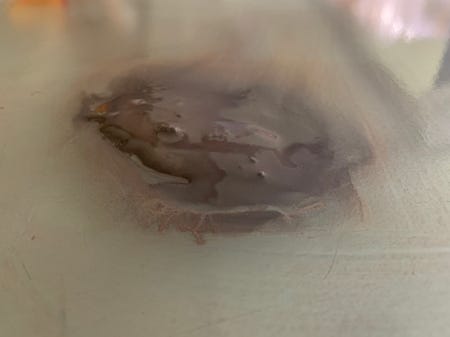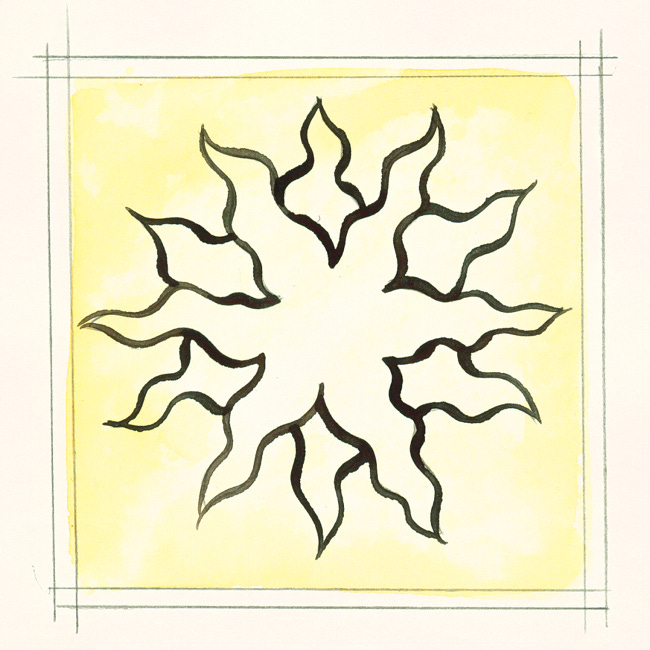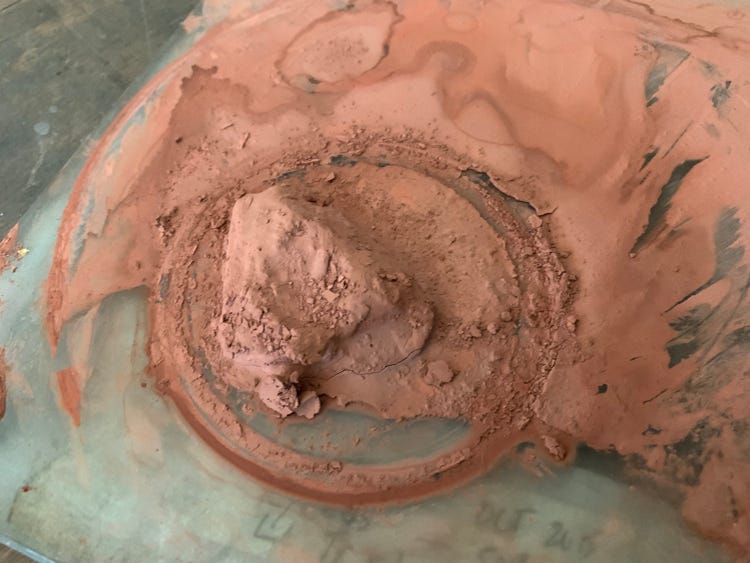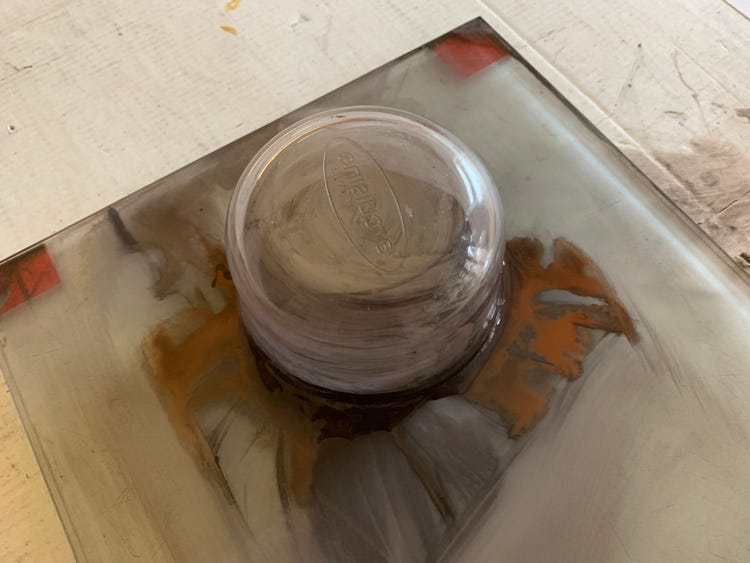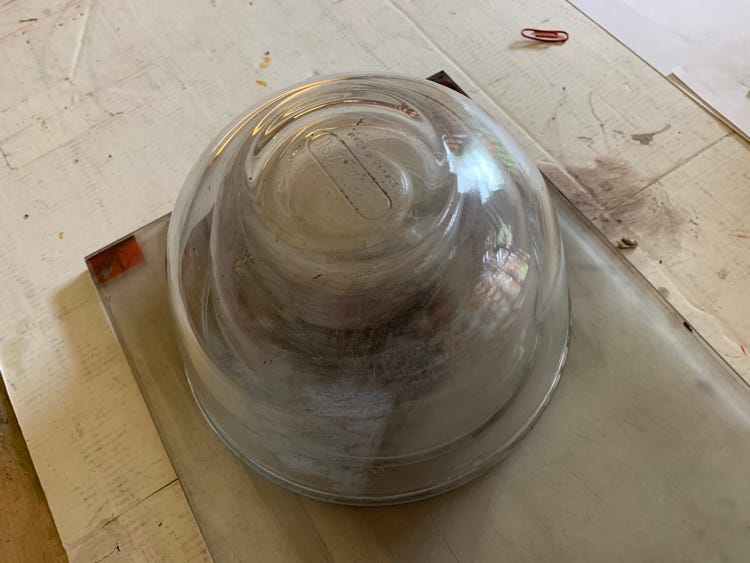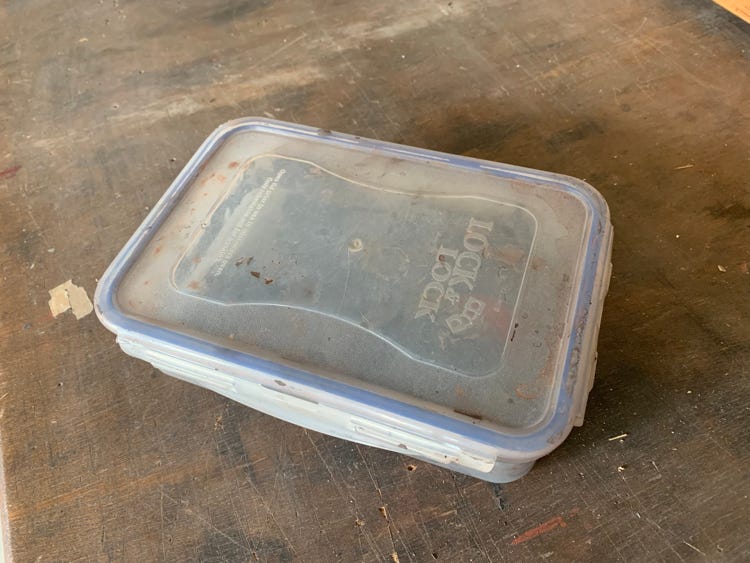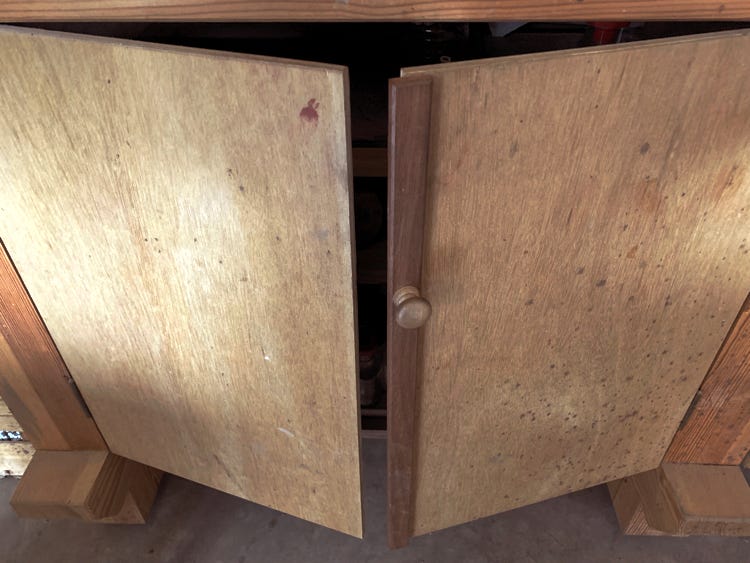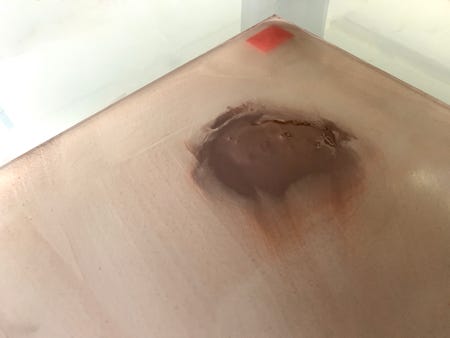We're glad to hear your questions. They tell us what's important to you. We want to know this, because your perspectives aren't the same as ours. For instance, we design and paint large sets of windows to earn a living, whereas some of you make small windows, and others do it because you love it. We love it too. But we also earn a living from it - it's not the same. It can't be.
Here's a familiar theme: how to mix your glass paint.
Our approach is totally at odds with the recipes you read in many books and with what happens in most classes.
Most books and classes say to mix a small amount of glass paint.
We suggest you mix a large amount. We describe this as a "lump" to make the contrast clear.
How you mix your paint is so important that we wrote and filmed a short online course about it. It's here.
What we don’t demonstrate however is today’s topic, namely, how to mix a small amount of glass paint which, though it isn’t economical is sometimes what the real world makes you do.
Here's an email we received last week.
Hello Gentlemen,
My question is : How do you mix up small quantities of paint for just 2 or 3 small suns-stars …
… on white opalescent glass. This paint may not be used again for several months.
Do you throw out what you don’t use? Save it?
Thank you.
Totally enjoyed your courses and your book.
David
Here's our reply.
It's an email, remember, not a college thesis.
Hello David,
That’s wonderful you enjoyed our book:
We wrote it chiefly for beginners, to show them how few brushes, paints and tools they really need to paint stained glass, also to welcome and encourage them. We know you're not a beginner anymore - that’s why we’re especially glad you found things inside you also like.
You ask, How do we mix small quantities of paint? Much the same way you mix our larger quantities: glass paint, a little water, and a little gum. Then plenty of mixing - far more mixing than people often think.
We’ll make a video about this and post it. Since mixing a small quantity isn't something we do a lot of, we’ll likely be fumbling in the dark ourselves, but also solving problems on the hoof, and maybe that’ll be as helpful in its own way as the well-rehearsed performances we post inside our courses.
Is it worth the time and effort to mix a small quantity of paint?
Yes, sometimes it is.
For us, a general principle is: whatever quantity of paint we mix, this quantity must help us paint the best we can.
So we'll mix a small quantity of paint to test it in the kiln, for instance. Say it’s a new paint, and we want to know how it fires.
But we won’t mix a small quantity if we think a small quantity will trip us up. Say it’s hot weather (which sometimes happens in England) - a small quantity of paint will just dry out too fast.
We'll return to principles and guidelines in just a moment.
For now, we want to approach things from the other end.
You mention you won't use the paint again for several months perhaps.
Do we throw out what we don't use? Or do we save it?
Most definitely we save it. In 20 years, we've thrown paint away just once - it was an experimental gum Arabic solution which a friend had made. Now we think the bottled gum you buy in shops contains preservatives. Anyway, our friend's concoction most definitely. A week later, the left-over paint was mouldy. To our mind, the problem had to be the gum: it couldn't have been the paint or water.
So that's the one and only time we threw our leftover paint away.
Every other time - weeks, months, even years later, old dried paint is fine. We’ve never had a problem.
Even paint like this, which is as dry as a bone:
It’ll just take more time and effort to bring it back to life.
Just always do something to keep dust and airborne grease from landing on it - one cover is good:
Two or even three covers are better:
And, if you won’t need this paint for several months, an airtight sandwich box is better still …
… especially if you add a small wet sponge which you refresh from time to time.
Size not crucial here: your airtight box could certainly be smaller.
And keep it out of heat and sunlight:
Yesterday we returned to the studio sandwich box and dug out a few spoonfuls of dried up paint we'd mixed last year:
Ten minutes later, with a bit more gum to freshen the mixture, we had a lovely resurrected lump of glass paint:
Incidentally, this is what we call a "large" lump.
More on large/small in a moment.
Right now we want to return to the situation you describe: you say, two or three sun-stars you want to paint - perhaps 60 short lines in all. And you ask, Can you mix a small quantity of paint to do this?
Yes.
A principle we follow is: if we need a little paint for just one technique - e.g. a bit of tracing - then it's easy to mix a small quantity of paint which has the consistency we want.
What's difficult, however, is when you want to use two or more techniques - e.g. tracing and flooding, or undercoating and tracing - because when you just have a small quantity of paint, it can be challenging (also for experienced glass painters) to move from one consistency to another.
That's one reason we usually mix a lump of paint.
Now this might be a "big" lump or a "small" lump. We call it a “lump” (whether big or small) because there’s always enough paint that we can mound it up and put it in the corner of our palette, cutting slices as we need them, and diluting them to whatever consistency we need.
A big lump of glass paint is like a car with several gears: you can do more things with it.
A small quantity of paint is more like a vehicle with just one gear specifically designed to go at one speed only.
This is not a perfect analogy but we hope it helps.
So if one day you want to trace and nothing else, certainly you can mix a small quantity of tracing paint, and carry on until it's all used up.
It’s quite a lot more difficult if you want to clean your glass, lay down undercoats on lots of glass, trace and also strengthen and maybe flood.
Also, if you only mix a small quantity of paint, it’s easy to run out, which you don’t want to happen half-way through a piece.
Anyway, give it a try. We all learn by pushing hard and working through the problems which matter to us individually.
We can't easily use written words to guide you with the exact quantities / ratios except to say it's very little water and even less gum.
But as we say, we’ll make you a short video and post it soon.
One last thought. You mention white opalescent glass. We've had bad experiences with white opalescent glass. The kiln's done unattractive things to it. Our glass actually changed colour! If you haven't test-fired this particular kind of glass before, it's worth doing.
If you have any other questions, just say. We're always glad to hear from you. It's how we learn what matters to you.





